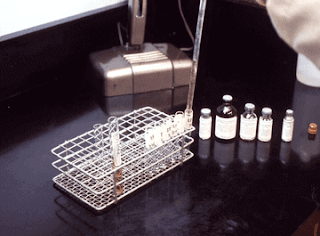Transfection Reagents And Equipment Market: Exploring Innovative Biotechnology Solutions During The Forecast Period From 2023-2030
 |
| Transfection Reagents And Equipment Market: |
Nucleic acids are introduced into
eukaryotic cells through transfection using non-viral techniques. The
substances and tools utilized in this process are referred to as transfection
substances and tools.
The Transfection Reagents and
Equipment Market is witnessing an era of remarkable advancements in
biotechnology solutions. As researchers and scientists strive to unlock the
secrets of cellular biology and genetic engineering, the demand for
cutting-edge transfection reagents and equipment has surged.
The Transfection
Reagents and Equipment Market and tools had a value of US$ 1,066.5 million
in 2022 and is anticipated to grow at a CAGR of 9.3% from 2023 to 2030 to reach
US$ 2,171.7 million, says Coherent Market Insights
Innovative transfection reagents
now offer enhanced transfection efficiency, enabling researchers to deliver
nucleic acids with precision and accuracy. This breakthrough has accelerated
gene editing and gene expression studies, propelling advancements in fields
like cancer research, immunotherapy, and regenerative medicine. Moreover, the
development of versatile transfection equipment has streamlined the process,
ensuring reproducibility and scalability.
One of the key areas of innovation
lies in the realm of non-viral transfection methods. Lipid-based transfection
reagents and electroporation systems have gained prominence due to their
reduced immunogenicity and ease of use. Researchers are exploring these methods
for delivering various biomolecules, including DNA, RNA, and proteins, to
address a wide array of cellular targets.
Additionally, advancements in
nanoparticle-based transfection systems have opened new avenues for gene
therapy. Nanocarriers allow targeted delivery of therapeutic genes to specific
cells or tissues, increasing treatment efficacy while minimizing off-target
effects. This has sparked interest in personalized medicine approaches,
tailoring treatments to individual patients based on their genetic profiles.
Key Players
Among others, Qiagen NV, Promega
Corporation, Polyplus-transfection SA, Mirus Bio LLC, Merck KgaA, MaxCyte Inc.,
Lonza Group, Bio-Rad Laboratories Inc., and Thermo Fisher Scientific Inc. are
some of the major competitors in the global transfection reagents and equipment
market.
The integration of bioinformatics and artificial intelligence has further amplified the impact of transfection reagents and equipment. AI-powered algorithms aid in the identification of potential therapeutic targets and optimize transfection protocols, reducing experimental time and resources. The synergy between biotechnology and AI has accelerated drug discovery and development processes, leading to the emergence of novel therapies.
To ensure the viral safety of
biopharmaceutical products, Virus Filtration is frequently utilized. It
is a size-based elimination technique that keeps virus particles on the surface
and in the membrane's pores by using a polymeric membrane that has been
specially constructed for the purpose.



Comments
Post a Comment